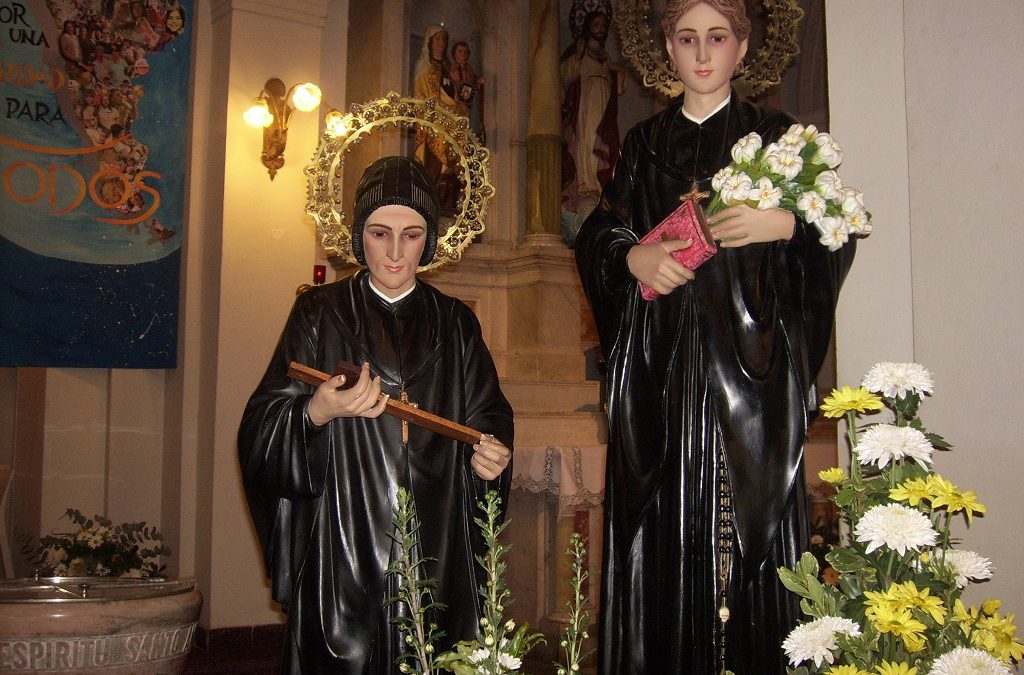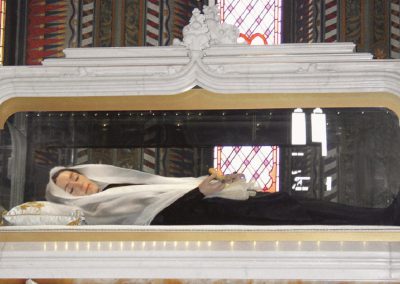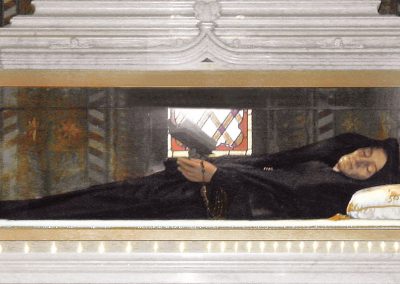An Institute totally founded on charity
The Institute of the Sisters of Charity was founded at Lovere (Bergamo) on 21 November 1832 by Bartolomea Capitanio aided by Caterina Gerosa and under the enlightened guidance of Don Angelo Bosio.
In his testimony don Bosio writes: “ I, the undersigned, attest that on the morning of the 21st November 1832, Feast of the Presentation of the Blessed Virgin Mary, in ‘San Giorgio’ parish Church, the most devout young women Caterina Gerosa and Bartolomea Capitanio received Holy Communion from the hands of Don Rusticiano Barboglio who celebrated Holy Mass at the altar of Our Lady of Sorrows. When Holy Mass was over they directed their steps to the house, formerly Gaia, now Conventino. There, before a holy picture of the Blessed Virgin Mary placed between two lit candles, on their knees and with the utmost devotion, they made, through the hands of Mary, the offering of themselves and of their possessions to God and consecrated themselves entirely to the works of charity in service of the poor, in the manner that was pleasing to God. These two persons alone, by love and sentiments bound more closely together than by family ties, started the holy Institute of the Sisters of charity, and began in the said house, poor and bare to the extent of lacking in the most strictly needed furniture, beds to sleep on and cooking utensils, but they were that gospel mustard-seed which in a marvelous manner grew and spread. This much I hereby attest in all truth and under oath, being myself not only a witness but also greatly edified and moved by it all”.
The ecclesial recognition of the holiness of Bartolomea and Vincenza – the canonization – is the crowning, the celebration of a Christian experience that had grown and developed through their everyday life in Lovere. Their canonization means that the Church attests that the universal call to holiness was received and answered by them in their daily life to a heroic degree. As a result, the spiritual principles that guided and shaped their lives are for us and for all Christians a safe point of reference. In other words those who follow the path they have gone by can also become saints. Actually, the path they went by is that already traced by Christ. And so they refer back to Him, to the Gospel. Bartolomea wants us to be «followers of the Redeemer» (Foundation document 14), Vincenza points to the wisdom of the Crucified Lord. They did not fix their thoughts on themselves.
Their canonization took place on 18 May 1950, Solemnity of the Ascension of the Lord. From recorded evidence relating to the Processes and from other sources referred to during the celebrations, the two Saints appear, first of all, together, in mutual relationship, one in need of the other, mutually complementary, thanks to their individual differences: together and distinct, each with her personal endowments and functions, for the good of the same undertaking.
In those pages, images more than words abound in an attempt to illustrate how they related to each other. Card. lldefonso Schuster, who called them the «Lovere pair», liked to use the image coined by Gerosa herself. «God has laid his yoke on them both: an eagle and an ox, to draw the cart of the Institute in the world». And Fr Agostino della Vergine, Postulator in the cause, used it himself in his address to the Pope after the reading of the Decree of canonization of Gerosa: «Chosen by divine Providence to continue the undertaking just started by B. Capitanio, whom she called ‘the eagle’, she called herself ‘the ox’, and ensured for the Institute the valid contribution of her sound piety, well-balanced mind, good sense of judgment and wide experience». Another meaningful image described Bartolomea as a searchlight that «cut across Gerosa’s life till her whole life’s path was made quite clear to her», a light which she then passed on to «so many sisters, giving them the same sure, clear guidance that she herself had received». In the ‘building’ series of images: Bartolomea thought out the plan, Vincenza did the building; one sowed the seed and sent down the roots, the other watered and tended the plant.




